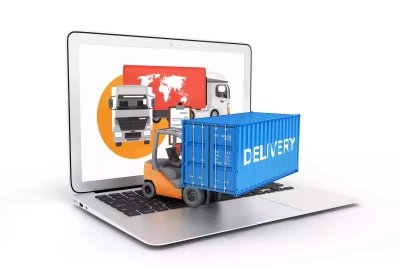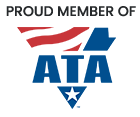How to Successfully Integrate Logistics Software Solutions
May 21, 2024
 In logistics, technology has become indispensable for enhancing operational efficiency and meeting customer demands. As this technology has grown, it’s become clear that the decision to invest in software solutions presents numerous challenges. Should companies opt to build their own systems or purchase existing ones? How do you ensure buy-in from your team?
In logistics, technology has become indispensable for enhancing operational efficiency and meeting customer demands. As this technology has grown, it’s become clear that the decision to invest in software solutions presents numerous challenges. Should companies opt to build their own systems or purchase existing ones? How do you ensure buy-in from your team?
For companies large and small, the complexities involved in these choices are vast. Choosing the wrong approach could saddle your operation with a system lacking key functionality, or worse, one that fails to meet your needs entirely. Through careful consideration, companies can navigate the tech adoption process effectively to decide the best path forward for their software needs.
The first step in choosing an approach to software adoption is to meticulously assess business requirements. It is imperative to differentiate between “nice-to-have” and “must-have” features. Too often, transport companies are inundated with exhaustive requests that overshadow the core functionalities essential for their operations. By focusing on specific use cases and aligning technology investments with strategic objectives, companies can streamline their decision-making process.
“Go back to the use cases. What are we trying to solve? What is it our business needs now?” suggests Glenn Koepke, VP of Enterprise accounts at Vector. “Go see the processes firsthand and make it a team project. That’s the coolest part of these transformations—it’s teamwork.”
The age-old debate between building proprietary systems and purchasing off-the-shelf solutions continues today. While both approaches have their merits, it’s essential to evaluate them through a pragmatic lens. Building custom software may seem appealing for companies with unique processes or extensive resources. However, building from scratch entails significant time and investment, often delaying the realization of benefits. On the other hand, purchasing existing software can offer rapid deployment and immediate access to advanced functionalities. It’s a matter of weighing the trade-offs and aligning with organizational goals.
Build or buy: which is right for your operation? Get strategies for successful software adoption in the latest episode of the Stay In Your Lane Podcast.
“Time and value are such key metrics,” says Andy Tomka, VP of Product at MVMNT TMS. “Try to remove the politics from the decision-making process. Your finance group can be an avenue to get everyone on the same page.”
Perhaps the most critical factor in software adoption is navigating the intricate web of organizational dynamics. The human element plays a pivotal role in shaping the success or failure of technology initiatives. Fostering a collaborative culture is key. Leadership must champion transparency and inclusivity, ensuring that stakeholders feel valued and engaged throughout the process. Moreover, empowering emerging talent to spearhead transformation projects can yield long-term dividends, nurturing a culture of innovation and growth.
 “Take your next up-and-coming leader and put them in a project like this,” says Koepke. “They will take seed, and you will be impressed and motivated to inspire the next generation.”
“Take your next up-and-coming leader and put them in a project like this,” says Koepke. “They will take seed, and you will be impressed and motivated to inspire the next generation.”
While technology serves as a catalyst for change, it’s essential to recognize that true transformation transcends software alone. Success in modern logistics hinges on effective change management and leadership. By fostering a culture of continuous learning and adaptability, organizations can navigate evolving landscapes with resilience and agility.
The journey towards adopting software solutions in freight is multifaceted, requiring careful consideration of business needs, technology options, and organizational dynamics. By fostering collaboration, embracing change, and staying focused on strategic objectives, companies can chart a course towards sustainable growth and success in the digital age.
At Triple T Transport, we’re committed to embracing innovation and leveraging technology to drive tangible value for our clients and partners. Whether it’s optimizing operations, enhancing customer experiences, or empowering our workforce, we remain steadfast in our commitment to providing the highest quality 3PL services.












